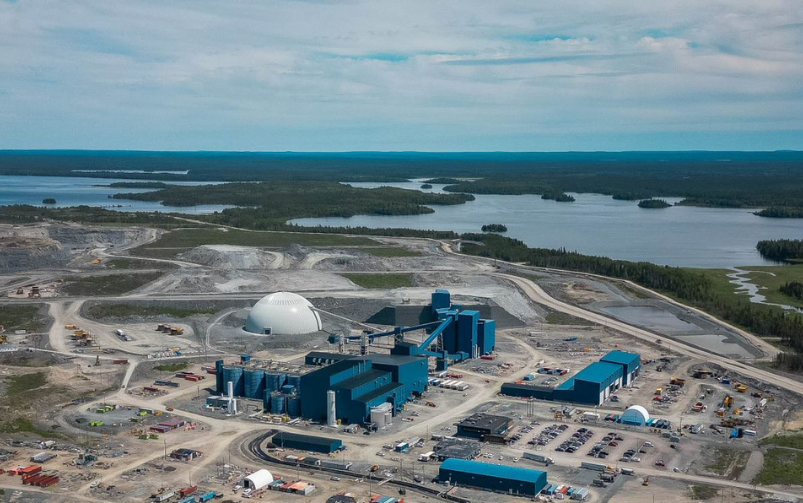Teck Resources boosted its copper production earlier this year thanks to the continued ramp up at its Quebrada Blanca operation in Chile. This increased production comes at a critical time, as a new report from BHP estimates that global copper demand will rise by an additional one million tonnes annually until 2035. Courtesy of Sumitomo Metals.
Welcome back to your weekly mining news recap, where we catch you up on some of the news you may have missed. This week’s headlines include Lithium Universe announcing plans for a major refinery in Quebec, the La Loutre graphite project encountering community resistance and Mali’s military junta seeking greater control of Barrick’s mining projects.
Global professional services firm EY released a report on Oct. 1 highlighting the top 10 risks and opportunities that mining and metals companies may face in 2025. The top three risks identified by the hundreds of mining and metals leaders surveyed by EY include capital, environmental stewardship and geopolitics. The report also highlighted that miners will need to make some significant changes to adapt to the increased demand for critical minerals needed for the ongoing energy transition.
Copper was the hot topic this week as BHP released a report on Sept. 30, estimating that global copper demand will rise by an additional 1 million tonnes annually until 2035 due to the adoption of new copper-intensive technologies. Teck Resources’ CEO Jonathan Price shared that the company is committed to organic growth for its copper projects to avoid having to pay a high price for takeovers, as reported by Reuters. Top copper producer Freeport-McMoRan also announced that it is focused on boosting output at its operations as opposed to buying. Additionally, mining giant Vale has acknowledged that it has been lagging behind its competitors in copper output, and is committed to increasing its copper production.
Wyloo will sell its low-carbon nickel on the Metalshub trading platform with the aim of creating a price index for green metal, as reported by Reuters. The move comes at a time when many nickel miners are struggling due to a price slump caused by a flood of low-cost, high-environmental impact nickel from Indonesia, and a premium for “greener” nickel has been suggested as a solution to this problem. Wyloo aims to use the trading platform for nickel sourced from its currently idled Kambalda operations in Australia, once they are restarted.
Australian company Lithium Universe is developing a lithium carbonate refinery in Bécancour, Quebec, where it plans to produce 18,270 tonnes per year of battery-grade lithium carbonate from spodumene feedstock sourced from multiple global and domestic suppliers, as reported by Engineering News. A recent prefeasibility study confirmed the project’s economic viability and estimated an after-tax net present value of US$501 million and estimated annual revenues of US$383 million once the refinery is operational.
Lomiko Metals’ La Loutre graphite project in Quebec could be at risk due to community opposition, as the province has denied funding required to construct the $236 million open-pit mine, as reported by The Northern Miner. Although the project received support from both Natural Resources Canada and the U.S. Department of Defense, two provincial ministers cited insufficient support from local communities as the reason for denying funding. The Petite-Nation Lakes Protection Group, which represents local municipalities, is mobilizing against the project due to environmental concerns.
The Canadian government’s new guidelines to restrict foreign takeovers of critical minerals companies will primarily affect Canada’s biggest miners, as reported by Kelsey Rolfe for the September/October issue of CIM Magazine. Increased scrutiny may make foreign investors hesitant to invest in Canadian companies, especially in small and mid-tier ones. While the policy changes could delay approvals and discourage foreign interest, experts suggest smaller companies might still navigate these changes with minimal impact unless prevented by national security concerns.
Four of Barrick Gold’s senior employees who were arrested last week in Mali for alleged financial crimes amid escalating tensions with the country’s military regime were released on Oct. 1, as reported by The Globe and Mail. A tentative agreement was reached between Barrick and Mali’s government, and details of the agreement will be shared once finalized. Barrick is facing pressure from Mali’s military junta, which is pursuing greater control of the country’s mining sector through an audit and a new mining code.
Extracting oil sands in northern Alberta requires high amounts of energy, making small modular reactors (SMRs) a potentially promising solution to provide on-site power while reducing emissions, as reported by Lynn Greiner for the August issue of CIM Magazine. Over 70 SMR designs are in development, supported by government initiatives, including funding for feasibility studies. Despite these advancements, challenges like securing regulatory approval and the need for skilled operators persist, with the first Canadian SMRs at a mine site expected to be at least a decade away.
Mining companies are facing significant challenges in tracking, reporting and reducing their Scope 3 emissions as they deal with complex value chain dynamics, as reported by Christopher Pollon for the August issue of CIM Magazine. Despite these challenges, companies that are able to address these emissions could unlock substantial growth opportunities, improve their ESG standings, and respond to mounting regulatory pressures and investor demands.
That’s all for this week. If you’ve got feedback, you can always reach us at editor@cim.org. If you’ve got something to add, why not join the conversation on our Facebook, Twitter, LinkedIn or Instagram pages?




